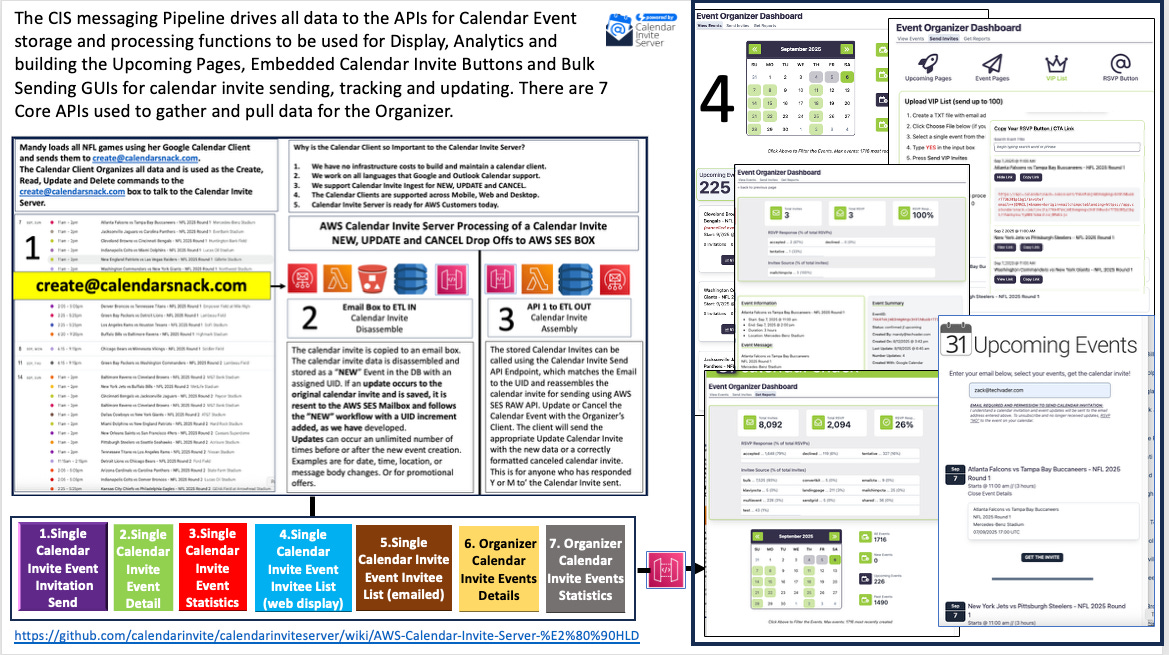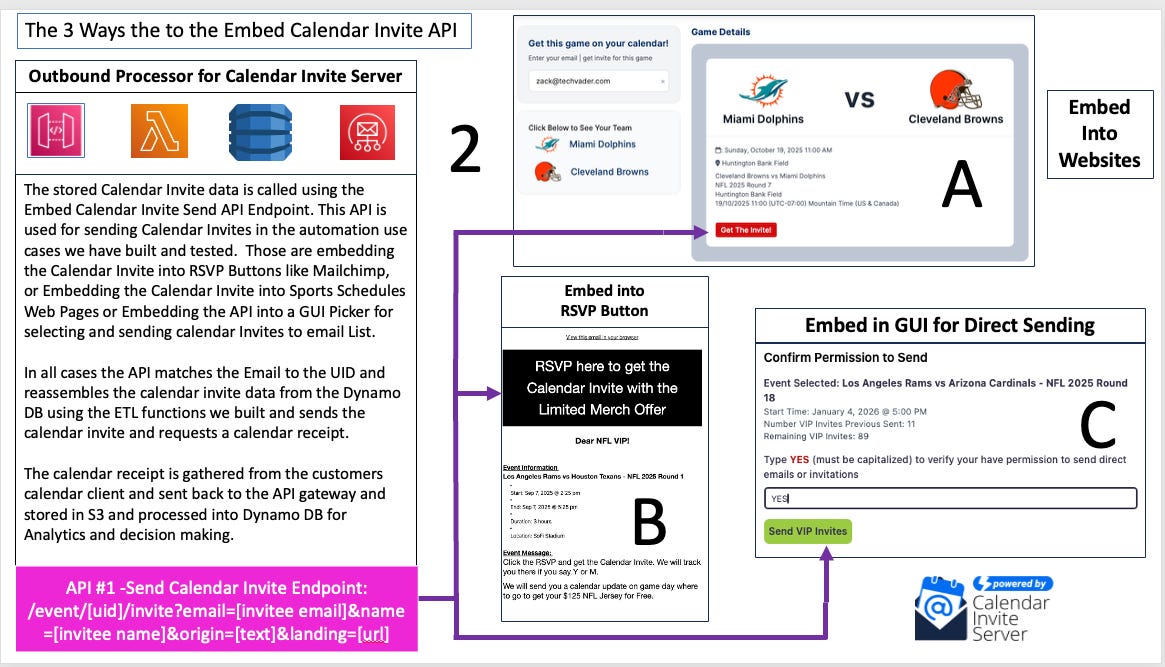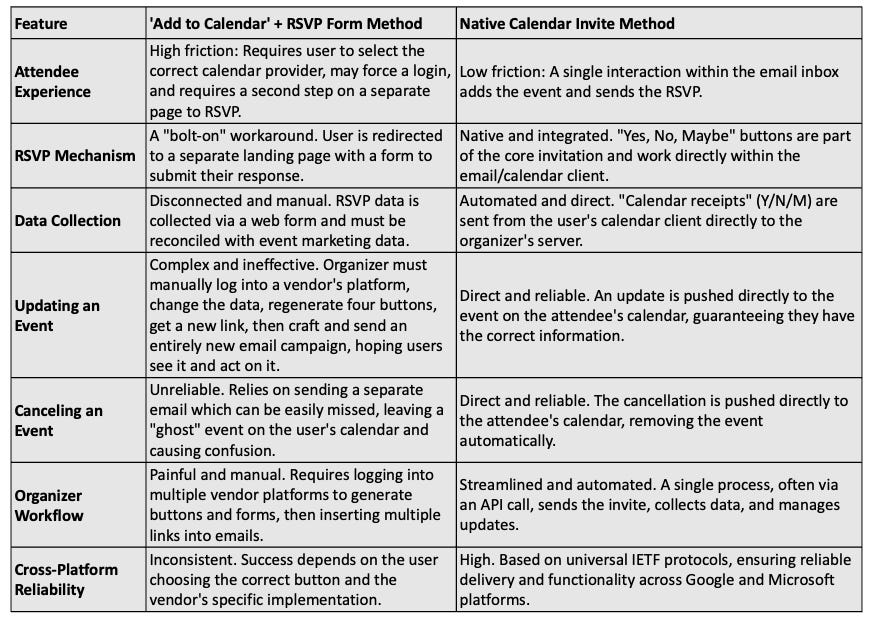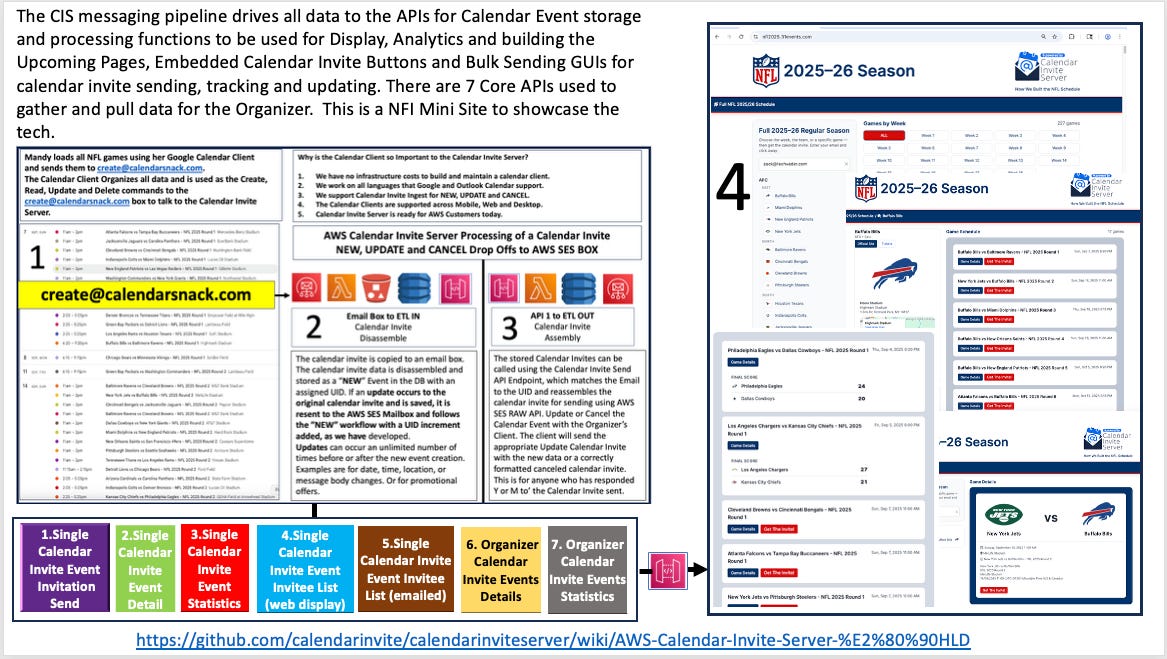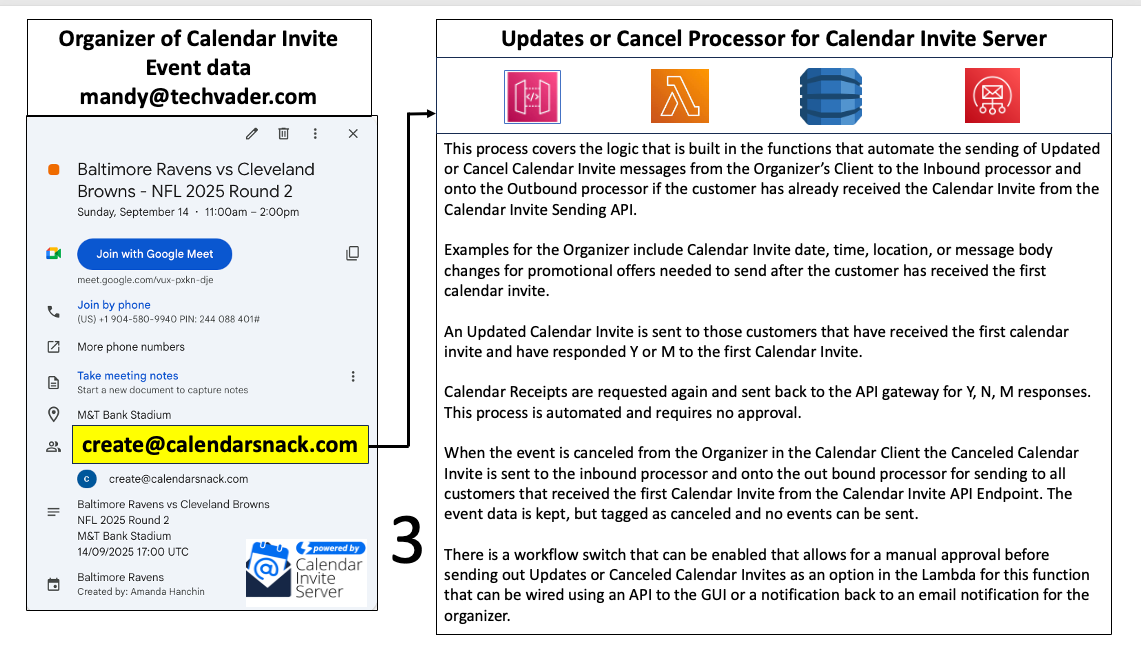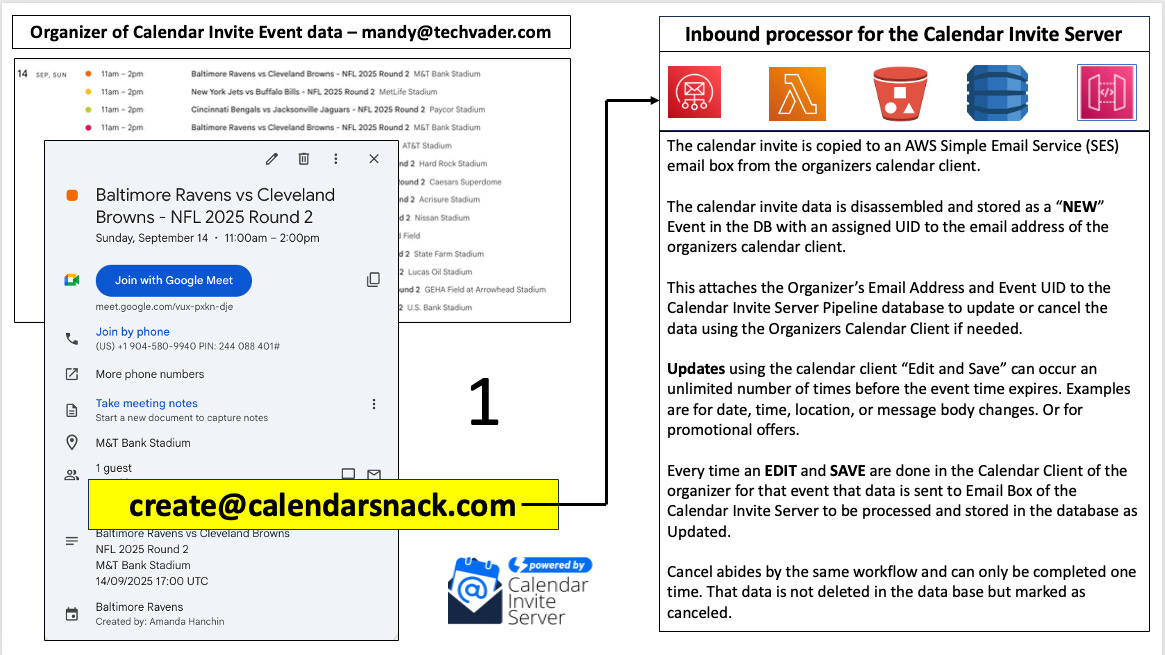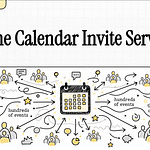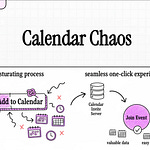The Add to Calendar Firery Trash Bin
1.0 Introduction: The Hidden Costs of a Flawed Workflow
In modern digital event marketing, success hinges on seamlessly transitioning a potential attendee from interest to commitment. The most tangible form of that commitment is securing a spot on their personal calendar. However, the prevalent industry method for achieving this—a cobbled-together system of ‘Add to Calendar’ links and separate RSVP forms—introduces significant friction and technical debt. The core thesis of this paper is that this common practice is a flawed workaround born out of necessity. A protocol-first approach, utilizing native calendar invites, offers a demonstrably superior solution, enhancing the experience for both event organizers and their attendees.
This analysis will compare two competing methodologies: the native ‘Calendar Invite,’ the hero of our story, and the villainous workaround of an ‘add to calendar’ plus the ‘RSVP Landing Page Form.’ This choice is a critical one for any event professional seeking efficiency, accurate data, and a seamless customer journey. To understand why one is superior, we must first examine the historical context that paved the way for this path with good intentions.
2.0 The Genesis of a Problem: How a Workaround Became the Standard
To appreciate the elegance of the protocol-driven solution, one must first understand the origin of the problem it solves. The widespread adoption of the ‘Add to Calendar’ button was not a strategic choice but a workaround created out of necessity. This section provides a brief historical analysis of the technical limitations that forced the industry down a path of complexity and confusion.
The core limitation that drove this trend was that standard calendar servers, such as those provided by Google or Microsoft, are not designed for large-scale marketing or transactional use cases. They lack the infrastructure to send invitations to large email lists and collect response data for analytics via a REST API.
Furthermore, these platforms lack a built-in workflow mentality for utilizing the UPDATE or CANCEL specifications required for marketing communications. Event organizers, unable to use these platforms for mass communication, were left stranded.
This limitation led directly to the invention of the ‘Add to Calendar’ button—a clever workaround designed to disguise a simple file download as an integrated RSVP button. By offering a downloadable .ICAL file, organizers could provide a manual way for users to add an event to their calendar. While it provided a basic function, this workaround came at a significant cost, introducing a cascade of failures that continue to plague event marketing today.
3.0 Deconstructing the ‘Add to Calendar’ Model: An Analysis of Inherent Flaws
In any digital user journey, the primary goal is to minimize friction. Every extra click, decision, or login screen is a potential exit point. The ‘Add to Calendar’ button, combined with its bolt-on RSVP form, is a textbook example of a high-friction workflow. This section dissects the four primary failure points of this model, revealing the hidden costs to organizer efficiency and the end-user experience.
3.1 Protocol Fragmentation and Inconsistency
The fundamental weakness of the .ICAL file method is its lack of a universal standard for implementation across different calendar clients. This creates immediate user confusion and technical unreliability.
Inconsistent Handling: Major calendar clients from Yahoo, Google, Microsoft, and Apple all handle
.ICALpackages differently.User Burden: To compensate, vendors are forced to present four separate buttons, transferring the burden of technical selection to the user.
High Error Potential: If a user selects the incorrect button for their calendar client, the function fails to execute. This flawed first step leads to a poor brand experience, resulting in lost potential attendees and reduced measurable engagement.
3.2 Elevated Customer Friction
Even when a user understands which button to click, the process introduces multiple points of friction that interrupt the user flow and kill conversion.
Risk of Mis-selection: As noted above, the primary friction point is the potential for user error in selecting the correct calendar provider from a list of options.
Forced Login Interruptions: If the user selects the correct button but is not currently logged into the corresponding calendar service in their browser, the workflow is interrupted. They are redirected and prompted to log in, adding a significant and frustrating step that often results in them abandoning the conversion at the final step.
3.3 Disconnected Data Collection
The ‘Add to Calendar’ button is a one-way mechanism; it can place an event on a calendar but cannot natively receive a “Yes,” “No,” or “Maybe” response. This critical data gap necessitates another unnatural, bolt-on solution.
The Bolt-On RSVP Form: To collect responses, organizers must redirect the user to a separate landing page with an RSVP form after they have already clicked the initial button.
Increased Complexity: This adds another layer of complexity for the organizer, forcing the customer into a disjointed, multi-step process. This poor user experience damages brand perception and fractures the data collection pipeline.
3.4 Ineffective Communication for Updates and Cancellations
Perhaps the most significant failure of this model is that it establishes no direct line of communication to the event on the customer’s calendar.
No Direct Updates: If event details change (e.g., time, location, link), the organizer cannot update the existing calendar entry directly.
Reliance on Email: The organizer is forced to send additional update emails, which are easily ignored, filtered into spam, or missed entirely. This leaves attendees with outdated information, leading to confusion, missed events, and a damaged reputation for the organizer.
Having identified the inherent problems with this workaround, we can now focus on the protocol-driven alternative that addresses these issues at their root.
4.0 The Superiority of the Native Calendar Invite Protocol
The native calendar invite is not a workaround; it is the standards-based, protocol-driven solution designed specifically for reliable, direct communication. This method leverages the underlying architecture of the internet’s communication standards to create a seamless and data-rich experience. This section evaluates the core advantages of the native protocol, demonstrating how it addresses each of the previously outlined flaws.
4.1 Protocol Integrity Ensures Seamless Delivery
Native calendar invites are built on a foundation of universal standards established by the Internet Engineering Task Force (IETF), ensuring they work as intended without user intervention. By adhering to these specifications, the invite is correctly packaged and delivered, which turns the recipient’s email inbox into the user interface for the calendar. This direct email-to-calendar communication happens automatically, allowing the recipient to RSVP with a single click and eliminating the need for multiple buttons, redirects, or logins.
4.2 Integrated RSVP and Data Collection
Unlike the ‘Add to Calendar’ button, a native invite is inherently a two-way communication request. The invitation automatically and natively prompts the user for a “Yes,” “No,” or “Maybe” response directly within their email client. This RSVP data, known as “calendar receipts,” is sent directly from the attendee’s calendar client back to the calendar invite server. This provides the organizer with accurate, real-time attendance analytics, eliminating the need for a separate, bolt-on form.
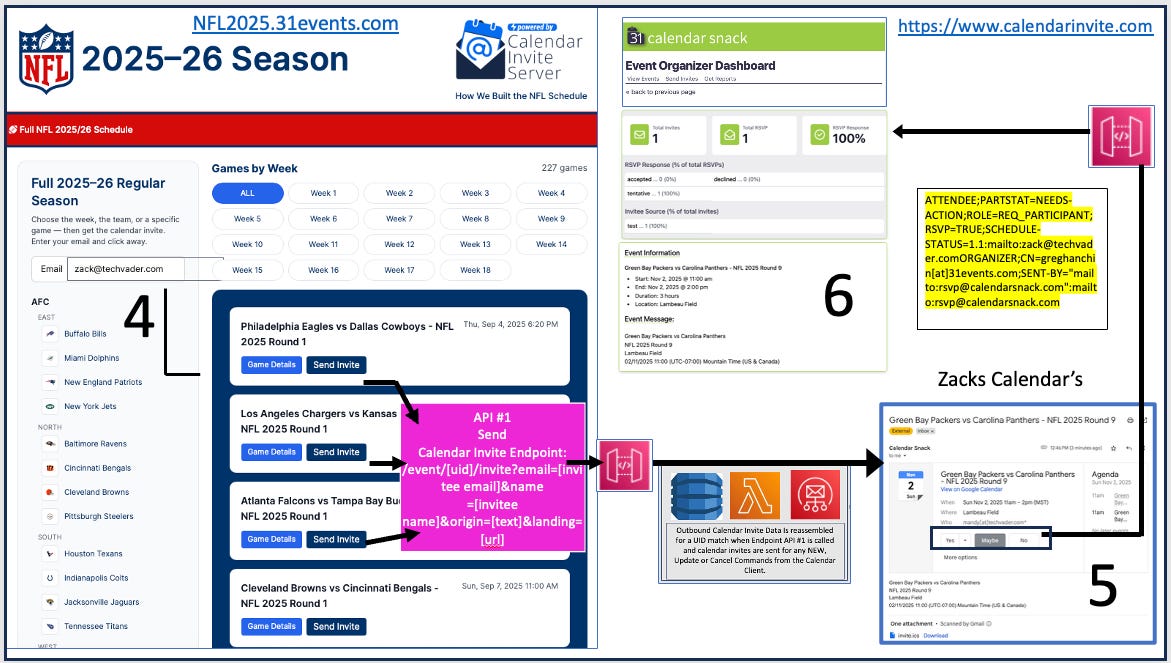
4.3 Dynamic Two-Way Communication
Once an attendee responds with “Yes” or “Maybe,” a persistent, direct communication channel is established on their calendar for the event. The organizer can push updates or cancellations by simply editing the event in their own calendar client (e.g., Google Calendar, Outlook) and hitting save; the protocol automatically sends the update to all attendees. Furthermore, the “Yes,” “No,” and “Maybe” buttons remain “alive” on the user’s calendar entry. This creates constant back pressure on the system, meaning if an attendee changes their status, that new data is instantly sent back to the organizer’s server for revised analytics.
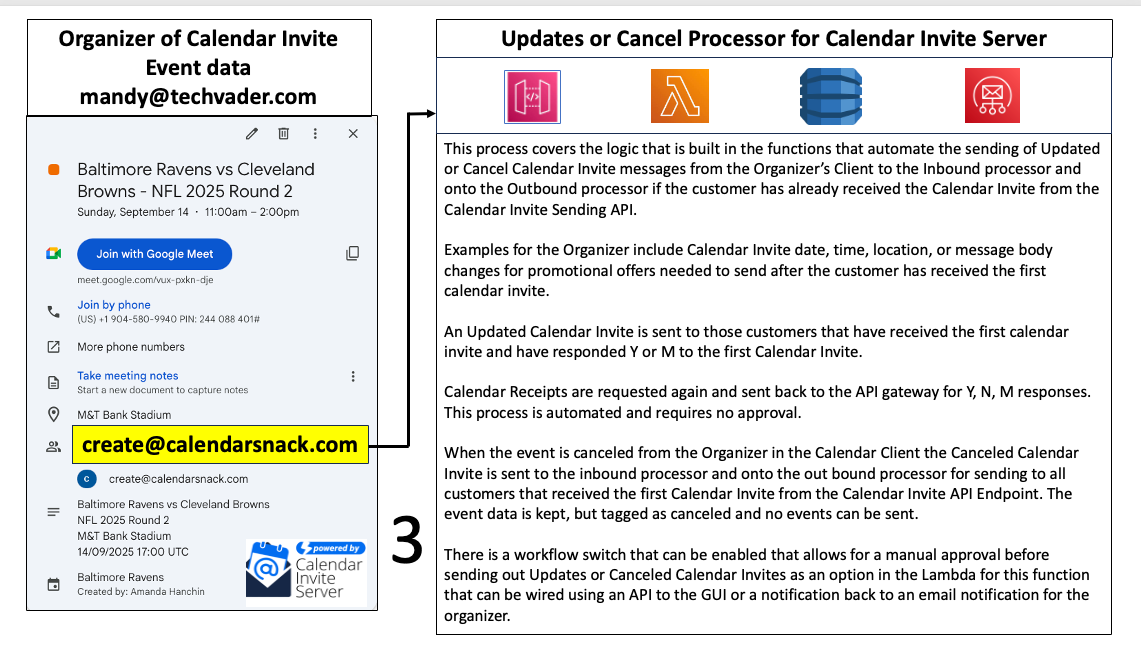
4.4 Universal Compatibility and Reliability
A correctly crafted calendar invite works reliably by design, removing the guesswork and platform fragmentation of the .ICAL method. An invite sent via a standards-compliant server works seamlessly across Google and Microsoft calendar clients on both desktop and mobile platforms. Additionally, when the protocol is encoded correctly, the calendar invite becomes automatically international-language ready, ensuring global reach and reliability.
5.0 Comparative Analysis: Workflow, Experience, and Data
The theoretical benefits of the native invite protocol become even clearer when placed in a direct, side-by-side comparison. The following table contrasts the two methods across the most critical vectors for marketing and event professionals, summarizing the key differences in experience, data flow, and operational efficiency.
This comparison starkly illustrates the operational and experiential superiority of adopting a protocol-first approach.
6.0 Conclusion: Re-evaluating Technology for a Frictionless Future
The ‘Add to Calendar’ button, while born of good intentions, is an outdated workaround that creates what can only be described as “a burning trash bin of Add to Calendar plus the Forms Landing Page.”
Its continued use introduces unnecessary friction, fragments data collection, and severs the lines of communication for critical event updates. The industry’s reliance on this model is a form of technical debt that hinders efficiency and degrades the customer experience.
Adhering to the universal protocols established by the Internet Engineering Task Force for calendar invitations is not merely a technical preference; it is a strategic business decision. It is time for marketing and event professionals to retire these high-friction, bolt-on workflows and embrace the strategic advantage of protocol-first solutions to streamline communication, guarantee data integrity, and deliver the frictionless experience modern attendees demand.
The Calendar Invite Rest API Pipeline
